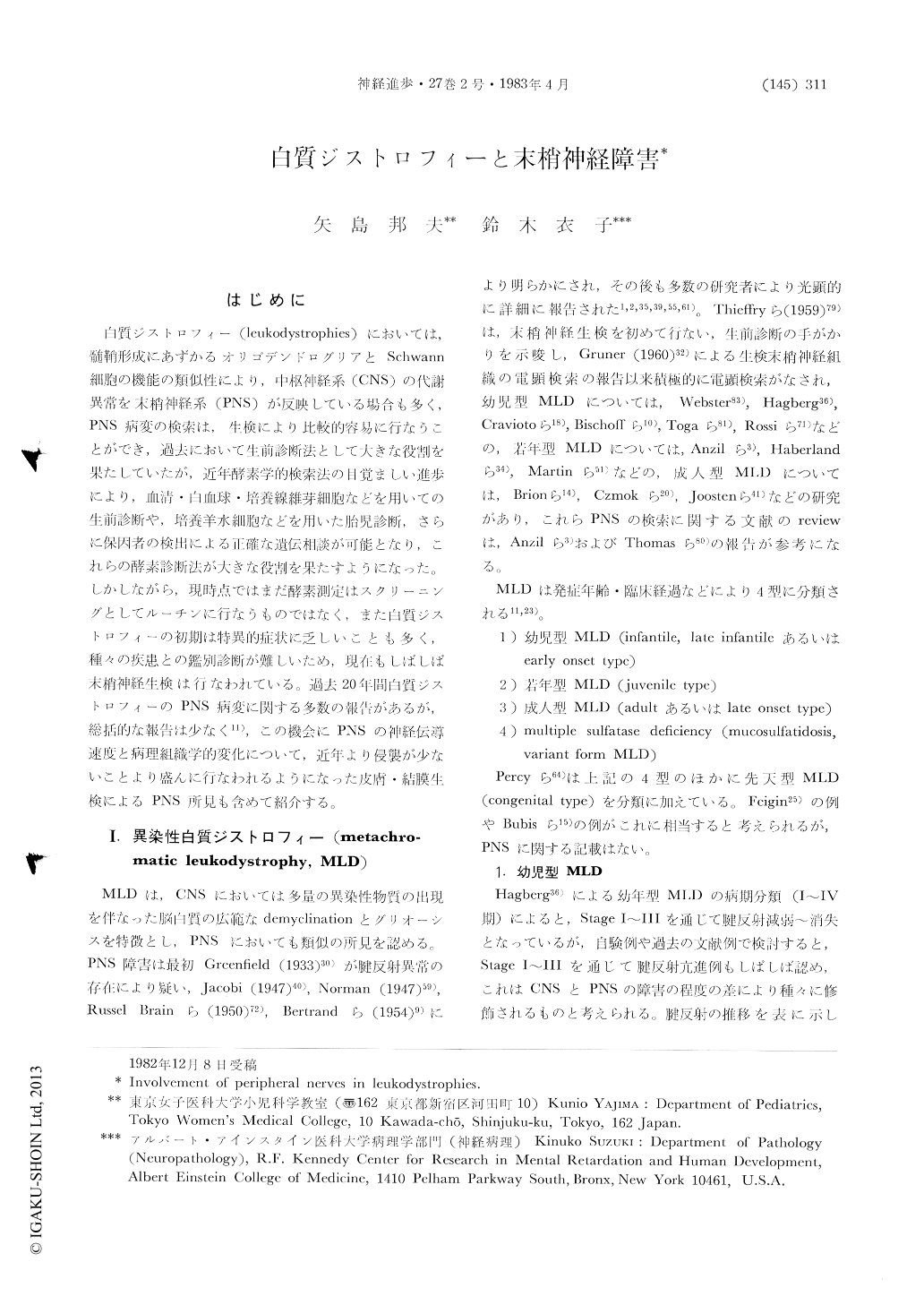Japanese
English
- 有料閲覧
- Abstract 文献概要
- 1ページ目 Look Inside
はじめに
白質ジストロフィー(leukodystrophies)においては髄鞘形成にあずかるオリゴデンドログリアとSchwann細胞の機能の類似性により,中枢神経系(CNS)の代謝異常を末梢神経系(PNS)が反映している場合も多くPNS病変の検索は,生検により比較的容易に行なうことができ,過去において生前診断法として大きな役割を果たしていたが,近年酵素学的検索法の日覚ましい進歩により,血清・白血球・培養線維芽細胞などを用いての生前診断や,培養羊水細胞などを用いた胎児診断,さらに保因者の検出による正確な遺伝相談が可能となり,これらの酵素診断法が大きな役割を果たすようになった。しかしながら,現時点ではまだ酵素測定はスクリーニングとしてルーチンに行なうものではなく,また白質ジストロフィーの初期は特異的症状に乏しいことも多く,種々の疾患との鑑別診断が難しいため,現在もしばしば末梢神経生検は行なわれている。過去20年間白質ジストロフィーのPNS病変に関する多数の報告があるが,総括的な報告は少なく11),この機会にPNSの神経伝導速度と病理組織学的変化について,近年より侵襲が少ないことより盛んに行なわれるようになった皮膚結膜生検によるPNS所見も含めて紹介する。
Abstract
Peripheral nervous changes in leukodys trophies are reviewed with respect to neurophysiological and neuropathological aspects. Symptom or sign of peripheral neuropathy is often the main clini-cal feature in the early stage of metachromatic leukodystrophy (MLD), globoid cell leukodystro-phy (GLD) and adrenomyeloneuropathy (AMN). Generally, nerve conduction velocities slow down moderately to markedly in all types of MLD (infantile, juvenile and adult types, and multiple sulfatase deficiency) and infantile GLD, and mildly to moderately in AMN, and appear normal in adrenoleukodystrophy (ALD) and late-onset GLD.

Copyright © 1983, Igaku-Shoin Ltd. All rights reserved.


